|
Shirvan Medallion rug
Code: SHMD33
Size (metric): 108x176cm
Size (ft): 3'6" x 5'9"
Area: 1.9 m2
Density: 160 000 knots per square meter, totally ~305 000 knots
Colors: madder red, midnight blue, medium blue, yellow (pomegranate+weld), green,
maroon, ivory, dark brown.
Dyes:
madder,
weld
(Reseda Luteola),
indigo,
pomegranate skins,
walnut husks,
natural dark brown sheep wool, natural ivory sheep wool
Materials: all wool - handcarded and handspun wool for pile, ivory wool warps and
ivory wool wefts
End
finish: thin plaited fringes
Weaving period: three months
Weaver: Aybeniz
Handwoven in Azerbaijan
Design:
The indigo field scattered with various polychrome floral, animal and
geometric minor motifs around three central stepped medallions, in a golden
yellow ground polychrome "leaf and calyx" main border and outer flowerhead minor
borders.
Signed with the Afshar tamga and dated (1438
(=2017))

|
Central field motifs

The serrated/saw-edged
medallions (flame, gubba, gubpa) have been related by some authors to
ancient Egyptian and Persian Royal insignia.
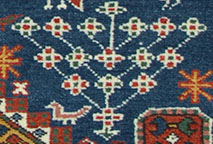
Tree of life

|
The
rug is dedicated to the wise ruler of the Shirvan - Ibrahim I
(reign 1382-1417).
The inscription above shows the name of the Shirvanshah Ibrahim I in kufic
pattern - who was the king of Shirvan between 1382-1417. A wise ruler and
clever diplomat, Shirvanshah Sheikh Ibrahim I managed, during his rule of
35 years, to save Shirvan from excesses of foreign invasions from both
Timur from the south and Tokhtamysh from the north. |
-
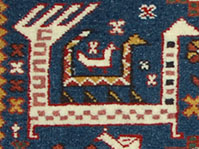
A peacock or simurgh motif - According to Latif Kerimov, the above bird
motif depicts a peacock. But there is a big possibilty that it may also
represent a Simurgh -
ancient benevolent, mythical flying creature, which was widely
used in Iran and Azerbaijan Folklore for centuries. There is a long
tradition of using the simurgh/phoenix motif in early Safavid Art,
including in rugs and kilims (derived from manuscript illumination).
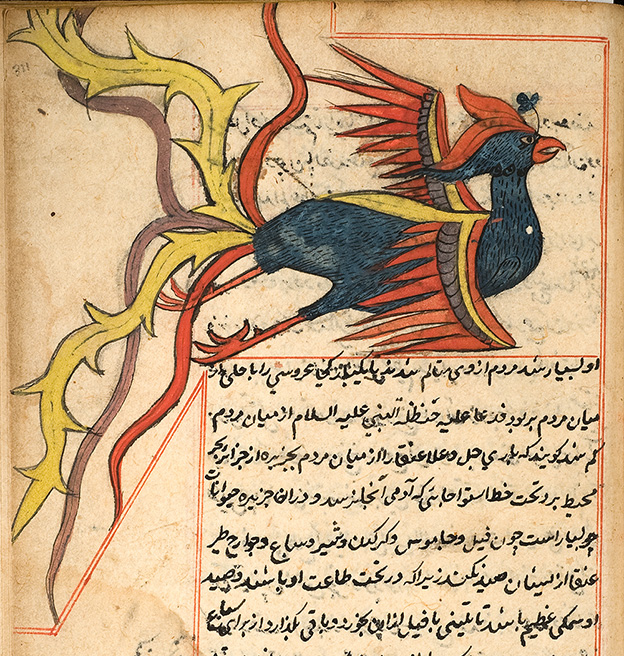
The benevolent phoenix has its counterpart in Iranian and Central Asian
(known as Tughrul Kushu) lore, where it is
known as the simurgh - a wise and protective bird.
|
|

Later named as crayfish (19-20th centuries), this motif is probably an
adaptation of Central Asian hooked totemic themes.

Reciprocal birds

Interestingly similar birds motif can be found in this column capital of
the VII century church with an inscription in Caucasian Albanian, found in
Mingachevir, Azerbaijan.
|
|

spinning wheel or spindle motif

Note, the minor border consists many various elements, placed
eccentrically.

so called "glass and leaf" (or calyx and leaf) border


a rug with the calyx and leaf border can seen
in "Jesus in the House of Marta" (c. 1535), by Vasco Fernandes (better known
as Grão Vasco)
|
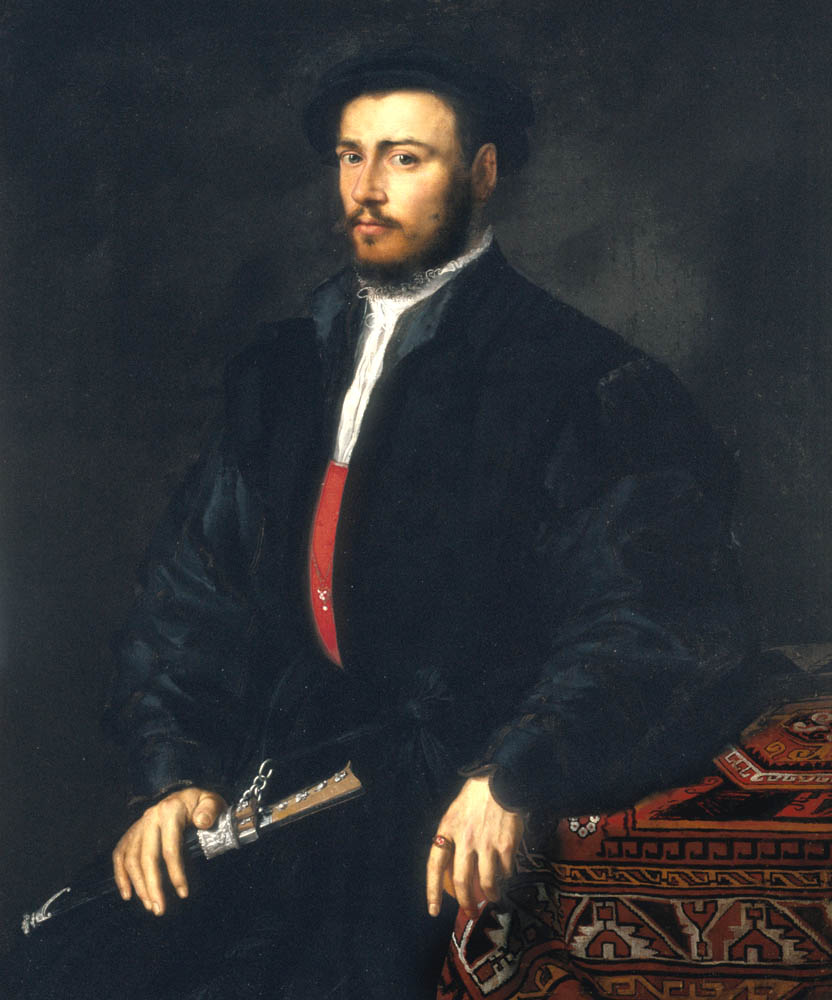
Portrait of a Young Nobleman, circa
1545 portrays a Caucasian rug with the so called "calyx and leaf"
border. Veneto-Lombard School |
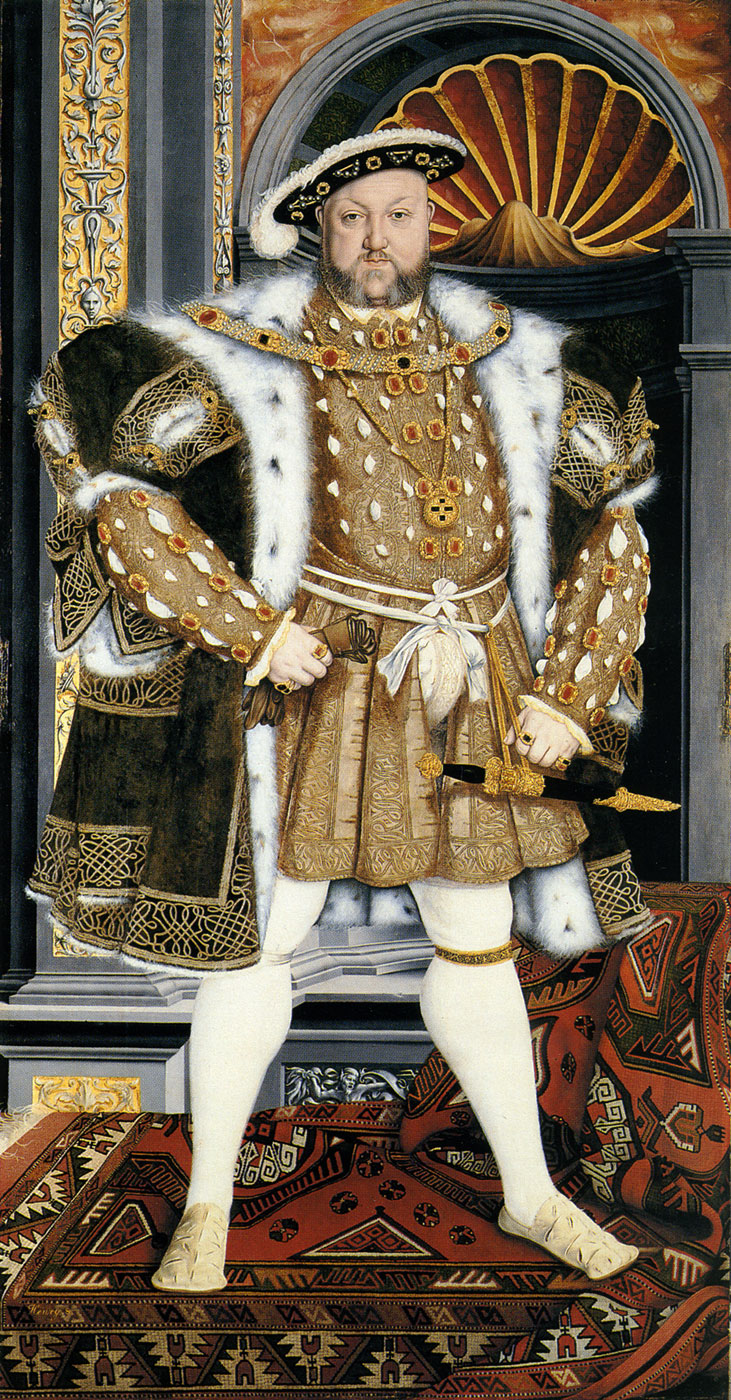
King Henry VIII, (1537-1557) standing
on a rug with a "calyx and leaf" main border.
Unknown, after
Holbein. Petworth House. |
|



